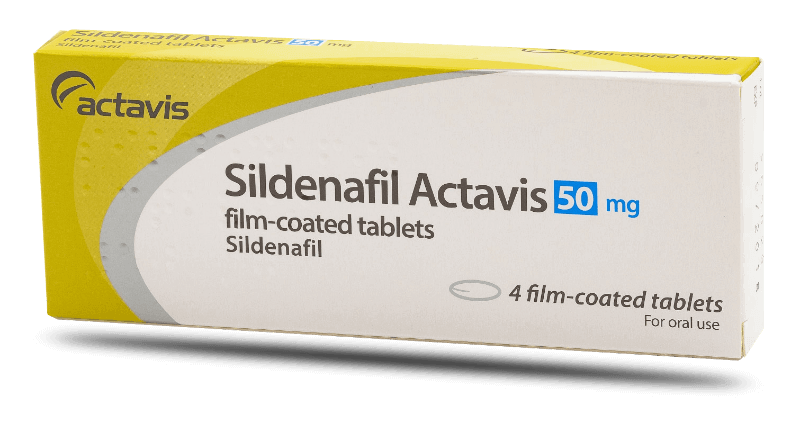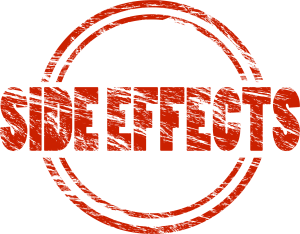What is Sildenafil?
General description of Sildenafil
Sildenafil was synthesized by a group of pharmaceutical chemists working at Pfizer’s research unit in England. It has been initially studied for use in hypertension and angina pectoris.
The first clinical trials were conducted in Morriston Hospital, Swansea on patients with angina pectoris. Phase I clinical trials suggested the drug had little effect on angina, but it could induce marked penile erections. Therefore, Pfizer decided to terminate the research in the cardiovascular area and switched the goals of the research into treating erectile dysfunction.
Sildenafil is an oral therapy for erectile dysfunction. In the natural setting, with sexual stimulation, it restores impaired erectile function by increasing blood flow to the penis.
Generic Sildenafil vs. Viagra
As Viagra patent expired, generics containing sildenafil become comercially available.
Teva’s generic Viagra was launched in December 2017 in United States.
Pfizer recently started to sell the new generic version of Viagra. Not only is the generic cheaper than the original drug but it has exactly the same effect.
The legend of the blue pill remains but generic alternatives can be used with the same effects, administering the same medicine (sildenafil) but with some extra money in the pockets of the patients.
While Viagra is known as “the little blue pill” and this is still only associated with Pfizer, the generic product is produced as white tablets. The appearance of the product is purely cosmetic and has no medical difference.
Click HERE to View Sildenafil Prices > >
Why is Sildenafil cheaper than Viagra?
Generics containing Sildenafil are produced by several manufacturers and contains the same medical ingredient and dosage as the branded Viagra counterpart. To receive market approval, a generic medicine must be ‘bioequivalent’ to the branded product which ensures that the generic product has the same effectiveness.
This means that the tablets contain the same amount of active drug substance and the same amount is absorbed into the body, they act in the same way and produce identical effects as the branded drug.
So, Pfizer developed the branded product Viagra, containing the drug sildenafil. After the patent expired, generics companies were able to begin manufacturing the sildenafil tablets, which have to be proven to work in the same way and have the same effect as Viagra and are manufactured to the same quality standards as all other drugs. There is no difference in the effect of the two products. Since Pfizer did all the work in the research, clinical testing and marketing of Viagra, generics companies did not have to invest millions of pounds in the market approval.
Therefore, the price of sildenafil is much less than that of Viagra.
The cheaper drug does not mean lower quality. It is simply because the companies did not have to foot the bill on development, testing, marketing and promotion of the drug. By the time their generic comes to market, the healthcare industry is aware of the drug and knows what it does, how effective it is and what side effects it can cause. This means a very small amount invested in drug marketing.
Sildenafil is produced by a number of manufacturers, and competition among them helps to regulate its price and keep it affordable for consumers. Branded Viagra is only produced by Pfizer, whose name recognition and customer loyalty allow it to charge a higher price for its renowned ‘little blue pills’.
Pharmacological actions of Sildenafil
Sildenafil improves quality of life and satisfaction for treated men and is well tolerated with a favourable safety profile. New data suggest that sildenafil has beneficial effects in several chronic conditions. It has been approved for the treatment of idiopathic pulmonary hypertension. Numerous articles have suggested that it improves endothelial function and a possible role in premature ejaculation or treatment of lower urinary tract symptoms has been suggested.
Sildenafil and erectile dysfunction
Erectile dysfunction is defined as the persistent inability to attain and maintain an erection sufficient to permit satisfactory sexual performance.
Erectile dysfunction may affect physical and psychosocial health and may have a significant impact on the quality of life (QoL) of sufferers and their partners. There is increasing evidence that erectile dysfunction can be an early manifestation of coronary artery and peripheral vascular disease. Erectile dysfunction should not be regarded only as a QoL issue, but also as a potential warning sign of cardiovascular disease (CVD).
Sildenafil, orally administered PDE5 inhibitor, has become a first-line treatment option for erectile dysfunction.
Sildenafil is a potent inhibitor of cGMP specific PDE5 which is responsible for degradation of cGMP in the corpus cavernosum. Inhibition of PDE5 reduces the degradation of cGMP which allows an erectile function to occur by relaxation of the penile smooth muscle.
Sildenafil and pulmonary hypertension
Pulmonary hypertension is a type of high blood pressure that affects the arteries in your lungs and the right side of your heart.
In one form of pulmonary hypertension, tiny arteries in your lungs called pulmonary arterioles, and capillaries become narrowed, blocked or destroyed. This makes it harder for blood to flow through your lungs and raises the pressure within your lungs’ arteries. As the pressure builds, your heart’s lower right chamber (right ventricle) must work harder to pump blood through your lungs, eventually causing your heart muscle to weaken and fail.
Some forms of pulmonary hypertension are serious conditions that become progressively worse and are sometimes fatal. Although some forms of pulmonary hypertension aren’t curable, treatment can help lessen symptoms and improve your quality of life.
Recent studies have shown that sildenafil attenuated pulmonary hypertension by increasing the supply of blood to the lungs. Sildenafil can act by relaxing the arterial wall and by decreasing the pulmonary arterial resistance. Due to the presence of PDE5 in the arterial wall, smooth muscle and lungs, sildenafil acts in these areas and induces vasodilatation. Pfizer submitted an additional registration for sildenafil as an oral therapy for pulmonary arterial hypertension with the FDA, and the drug was approved for this indication in June 2005. The formulation for the pulmonary hypertension therapy was named Revatio, avoiding confusion with Viagra. Revatio is formulated as white, film-coated round tablets equivalent to 20 mg of sildenafil for oral administration.
Revatio is usually taken three times each day, about 4 to 6 hours apart.

Sildenafil and pain
Pain is a complex process which involves the modulation of both the peripheral and central nervous system. Pain is a self-protective mechanism which forces the body to move away from danger, and afterwards, to rest the injured part, giving the body the chance to heal itself. Pain may be classified according to the origins of pain signal generation. It may be neuropathic, psychogenic, referred, somatic and visceral pain. In acute pain (predominantly nociceptive), visceral, somatic and referred mechanisms play important roles in the pain perception.
Recently sildenafil has been shown to have immense potential for the treatment of pain in animals and humans. Sildenafil produced an antinociceptive effect in animal models of pain after local peripheral and systemic administration. Acetylcholine and cholinomimetic agents with predominant muscarinic action are known to increase the concentration of cGMP by activation of the NO signalling pathway in the nociceptive conditions.
Sildenafil is a new candidate for a pathogenetically valid treatment in diabetic patients with chronic neuropathic pain. Sildenafil inhibits spinal PDE5 and leads to the accumulation of cGMP that produces intrathecal antinociception. Results of the recent study suggest that cGMP accumulates as a result of PDE5 inhibition and interacts with the cholinergic system to mediate this pain-reducing effect.
Sildenafil and multiple sclerosis
Multiple sclerosis is an inflammatory disease of the central nervous system characterized by pathologic changes including demyelination and axonal injury in the brain, spinal cord, and optic nerves. Myelin sheaths surround the nerves in the brain and spinal cord. Myelin is lost in multiple areas, leaving plaques or scars called sclerosis so named multiple sclerosis. Myelin is the fatty substance that coats and protects these fibres, similar to the way insulation shields electrical wires.
Sildenafil has been shown to protect multiple sclerosis patients from neurodegeneration through increased grey matter perfusion in the brain. Functional magnetic resonance imaging taken after oral administration of sildenafil has shown a significant increase in grey matter perfusion in multiple sclerosis patients. Sildenafil has been shown to enhance neurogenesis suggesting its role in neuroprotection in multiple sclerosis.
Sildenafil and neurogenesis
The old hypothesis regarding neurogenesis, or the birth of new neuronal cells, suggested that neurogenesis could occur only in developing organisms. However, recent scientific studies have demonstrated that neurogenesis occurs continuously into and throughout adult life in both vertebrate and invertebrate organisms.
Neurogenesis occurs in adult forebrain regions of the subventricular zone and the dentate gyrus in various species. Ongoing neurogenesis is thought to be an important mechanism underlying neuronal plasticity, enabling organisms to adapt to environmental changes and influencing learning and memory throughout life.
Sildenafil has been shown to increase cGMP levels in the brain, induce neurogenesis and reduce neurological deficits in rats after a stroke.
The use of specific PDE5 inhibitors such as sildenafil may, therefore, offer an innovative approach for improvement of brain function in the aged population.
Sildenafil and memory enhancement
Alzheimer’s disease is a progressive neurodegenerative disorder that is mainly characterized by cognitive impairment. An estimated 4 million people, most of them elderly, have Alzheimer’s disease in the United States, affecting 30–50% of individuals aged 85 and older. The specific cause of Alzheimer’s disease is unknown, but genetic abnormalities appear to play a role and neuroinflammation is now recognized as a prominent feature in Alzheimer’s pathology.
Animal studies have shown that sildenafil enhances memory.
Administration of sildenafil directly into the hippocampus after the first trail in object recognition task improved memory in mice and enhanced the processes of consolidation of object information. Similarly, sildenafil has been shown to attenuate memory impairment induced by nitric oxide synthase inhibition, hyperammonemia and blockage of muscarinic cholinergic receptors.
Production of NO and cGMP is reduced with age and to some extent contributes to age-related memory decline. Sildenafil, a specific inhibitor of cGMP degrading enzyme, therefore, offers a new strategy for memory improvement and a novel therapy for Alzheimer’s disease in the future.
Non-medical uses
Jet lag research
A team from the National University of Quilmes, Argentina, discovered that sildenafil can help hamsters recover from jet lag
They concluded that the dose needed for re-entrainment in humans could be lower than the one used for the treatment of erectile dysfunction.

Sports
Professional athletes have been documented using sildenafil, believing the opening of their blood vessels will enrich their muscles. In turn, they believe it will enhance their performances.
“It’s bigger than creatine. It’s the biggest product in nutritional supplements”, said Victor Conte Jr., a former bassist with Tower of Power and the founder and president of Bay Area Laboratory Co-operative, a sports nutrition centre in California.
Mechanism of action
The physiological mechanism responsible for the erection of the penis involves the release of nitric oxide (NO) in the corpus cavernosum during sexual stimulation. Nitric oxide then activates the enzyme guanylate cyclase, which results in increased levels of cyclic guanosine monophosphate (cGMP), producing smooth muscle relaxation in the corpus cavernosum and allowing inflow of blood.
Pharmacokinetic properties
Absorption
Sildenafil is rapidly absorbed. Maximum observed plasma concentrations are reached within 30 to 120 minutes (median 60 minutes) of oral dosing in the fasted state. When sildenafil is taken with food, the rate of absorption is reduced with a mean delay in Tmax of 60 minutes and a mean reduction in of 29%.
Distribution
The mean steady-state volume of distribution (Vd) for sildenafil is 105 l, indicating distribution into the tissues. After a single oral dose of 100 mg, the mean maximum total plasma concentration of sildenafil is approximately 440 ng/mL (CV 40%). In healthy volunteers receiving Sildenafil (100 mg single dose), less than 0.0002% (average 188 ng) of the administered dose was present in ejaculate 90 minutes after dosing.
Biotransformation
Sildenafil is cleared predominantly by the CYP3A4 (major route) and CYP2C9 (minor route) hepatic microsomal isoenzymes. The major circulating metabolite results from N-demethylation of sildenafil. This metabolite has a phosphodiesterase selectivity profile similar to sildenafil and an in vitro potency for PDE5 approximately 50% that of the parent drug. Plasma concentrations of this metabolite are approximately 40% of those seen for sildenafil. The N-desmethyl metabolite is further metabolised, with a terminal half-life of approximately 4 h.
Elimination
The total body clearance of Sildenafil is 41 L/h with a resultant terminal phase half-life of 3-5 h. After either oral or intravenous administration, sildenafil is excreted as metabolites predominantly in the faeces (approximately 80% of administered oral dose) and to a lesser extent in the urine (approximately 13% of administered oral dose).
Overdose
In single-dose volunteer studies of doses up to 800 mg, adverse reactions were similar to those seen at lower doses, but the incidence rates and severities were increased. Doses of 200 mg did not result in increased efficacy but in the incidence of adverse reactions (headaches, flushing, dizziness, dyspepsia, nasal congestion, altered vision) was increased.
In cases of overdose, standard supportive measures should be adopted as required. Renal dialysis is not expected to accelerate clearance as sildenafil is highly bound to plasma proteins and not eliminated in the urine.
Further information on clinical trials
The first data on the efficacy of sildenafil was published by Goldstein and colleagues (1998). Sexual intercourse was successful in 69% of all attempts for the men receiving sildenafil, as compared with 22% for those receiving placebo (p<0.001).
In clinical trials, sildenafil was administered to more than 8000 patients aged 19-87. The following patient groups were represented: elderly (19.9%), patients with hypertension (30.9%), diabetes mellitus (20.3%), ischaemic heart disease (5.8%), hyperlipidaemia (19.8%), spinal cord injury (0.6%), depression (5.2%), transurethral resection of the prostate (3.7%), radical prostatectomy (3.3%). The following groups were not well represented or excluded from clinical trials: patients with pelvic surgery, patients post-radiotherapy, patients with severe renal or hepatic impairment and patients with certain cardiovascular conditions.
In fixed-dose studies, the proportions of patients reporting that treatment improved their erections were 62% (25 mg), 74% (50 mg) and 82% (100 mg) compared to 25% on placebo. In controlled clinical trials, the discontinuation rate due to sildenafil was low and similar to placebo. Across all trials, the proportion of patients reporting improvement on sildenafil were as follows: psychogenic erectile dysfunction (84%), mixed erectile dysfunction (77%), organic erectile dysfunction (68%), elderly (67%), diabetes mellitus (59%), ischaemic heart disease (69%), hypertension (68%), TURP (61%), radical prostatectomy (43%), spinal cord injury (83%), depression (75%). The safety and efficacy of sildenafil were maintained in long-term studies.
Can I purchase online sildenafil?
Yes. Just send a request to our pharmacist for Sildenafil.
Sildenafil can be released following a discussion with our pharmacist. An evaluation from our pharmacist is necessary to confirm if Sildenafil is the appropriate medicinal product for you.
If any unpleasant effects appear or if you have any questions, please address directly to our pharmacy and to our doctor at phone number 01625 460 621.
So, what should be my real expectations after taking Sildenafil for the first time?
Sildenafil will allow a firmer erection with less stimulation and will make possible a few more erections during the interval of 4-5 hours postdose. It will also decrease your refractory time, the time required to achieve a subsequent erection after ejaculation.
Click HERE to View Sildenafil Prices > >
References:
- http://www.ema.europa.eu/docs/en_GB/document_library/EPAR_-_Product_Information/human/000202/WC500049830.pdf;
- https://www.ncbi.nlm.nih.gov/pmc/articles/PMC2699643/;
- NIH, C.D.P.o.I. NIH Consensus Conference. Impotence. . JAMA, 1993. 270: 83. http://www.ncbi.nlm.nih.gov/pubmed/8510302;
- https://uroweb.org/wp-content/uploads/EAU-Guidelines-Male-Sexual-Dysfunction-2016-3.pdf;
- Versatile effects of sildenafil: Recent pharmacological applications: Subramaniam Uthayathas, Senthilkumar S. Karuppagounder,Bessy M. Thrash, Kodeeswaran Parameshwaran,Vishnu Suppiramaniam, Muralikrishnan Dhanasekaran;
- https://www.drugs.com/sildenafil.html;
- Gould E, Reeves AJ, Graziano MSA, Gross CG: Neurogenesis in the neocortex of adult primates. Science, 1999, 286, 549–552;
- Firestein BL, Bredt DS: Regulation of sensory neuron precursor proliferation by cyclic GMP-dependent protein kinase. J Neurochem, 1998, 71, 1846–1853;
- Baratti CM, Boccia MM: Effects of sildenafil on long-term retention of an inhibitory avoidance response in mice. Behav Pharmacol, 1999, 10, 731–737;
- https://www.improbable.com/ig/ig-pastwinners.html#ig2007;
- https://www.ncbi.nlm.nih.gov/pmc/articles/PMC1887561/;
- http://www.nydailynews.com/sports/baseball/yankees/source-roger-clemens-host-athletes-pop-viagra-onfield-performance-article-1.171270;
- https://www.ncbi.nlm.nih.gov/pmc/articles/PMC2699643/.
Mens Pharmacy is not liable for the currency or accuracy of the information contained in this blog post. For specific information about your personal medical condition, please contact our doctors or pharmacists for advice on [email protected].

